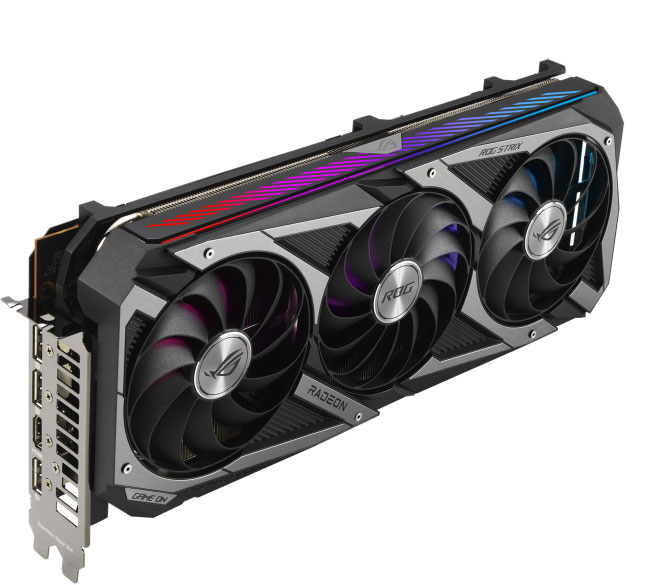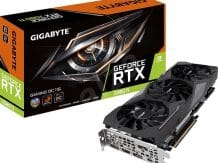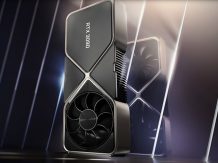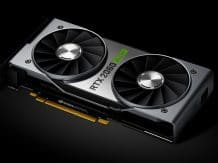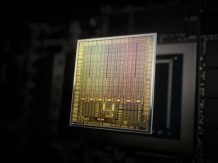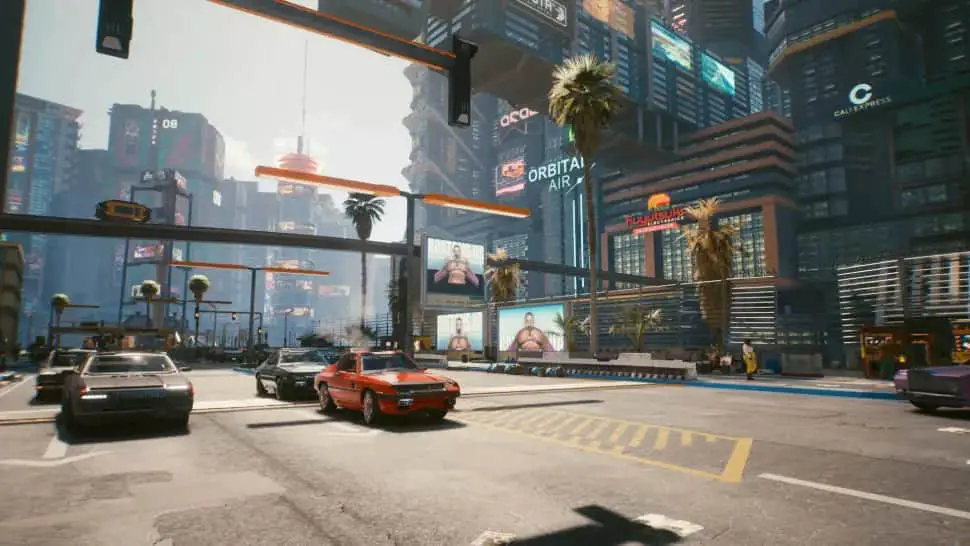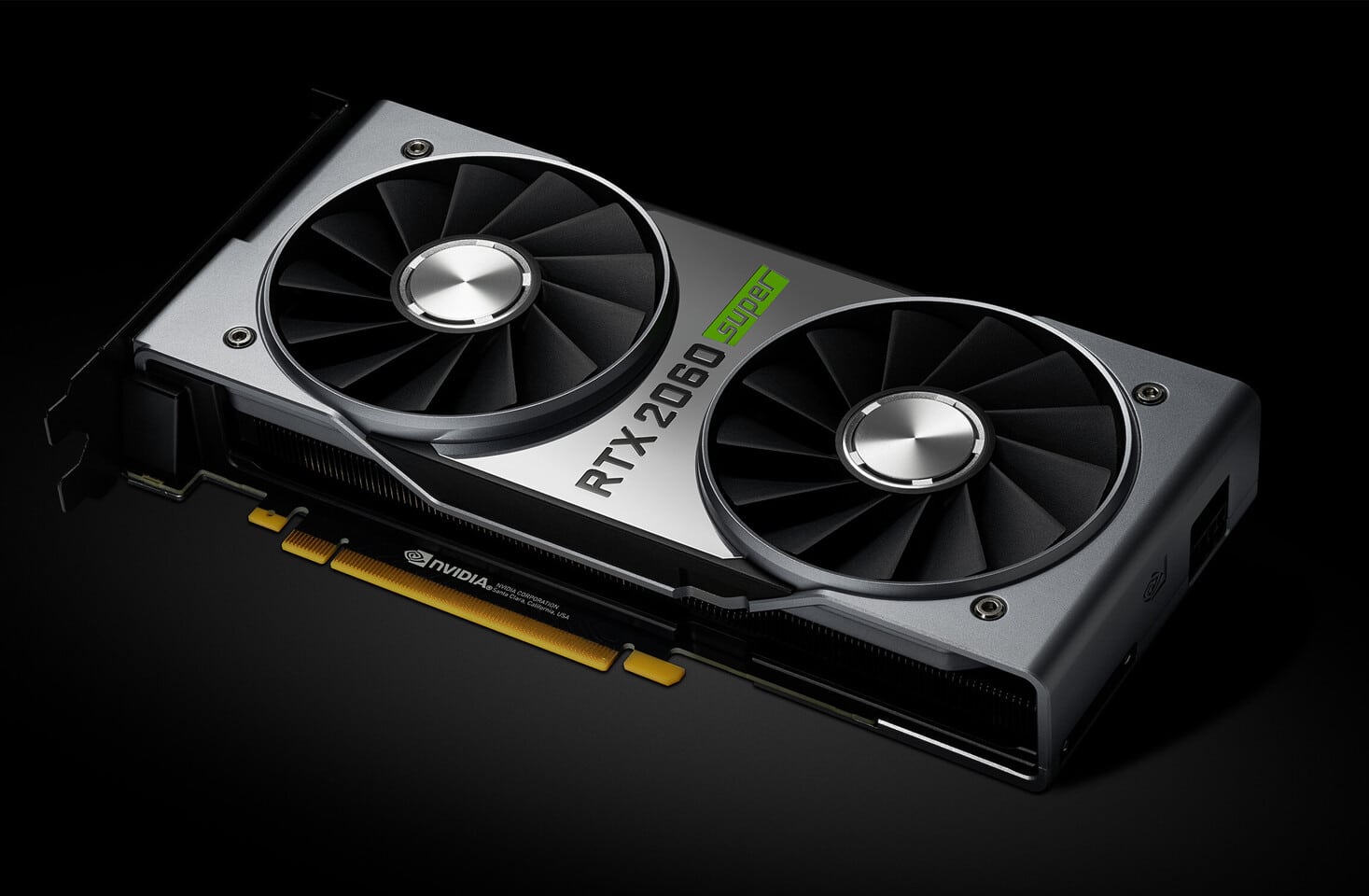Review of the video card Asus ROG Strix Radeon RX 6700 XT Gaming OC (12 GB): Hashrate | Overclocking Settings| Test (proven) checkout all these and more.
Object of research : a commercially available 3D graphics accelerator (video card) Asus ROG Strix Radeon RX 6700 XT Gaming OC 12 GB 192-bit GDDR6.
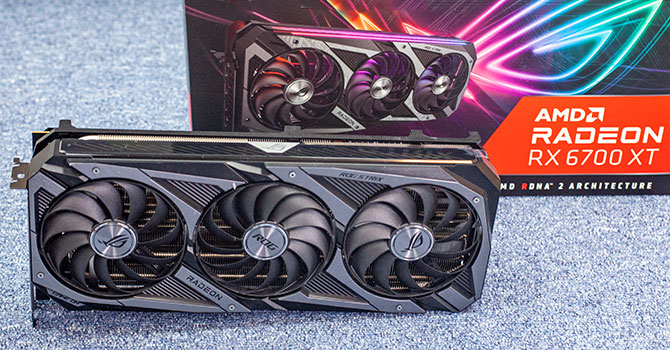
Brief History- ROG Strix Radeon RX 6700 XT 12 (GB)
At the beginning of all reviews of serial video cards, we update our knowledge about the performance of the accelerator family and its competitors. All this is subjectively assessed by us on a scale of five gradations. (This material was prepared prior to the release of the RTX 3080 Ti).
Many Read This as well – AMD Radeon RX 6800 vs RX 6800 XT: Hashrate | Specs | Test | Config | Profit
In general, the Radeon RX 6700 XT demonstrates its belonging to the number of very productive accelerators such as the GeForce RTX 3070/3060 Ti, falling right between them. Considering that earlier the Radeon RX 6800 demonstrated performance higher than the GeForce RTX 3070 (in games without ray tracing), it was logical to expect that the “middle” level of the Radeon RX 6700 XT will be approximately on the level of the GeForce RTX 3060 Ti, and it turned out to be even higher. In practice, this means that the Radeon RX 6700 XT will allow you to play comfortably at 2.5K at maximum graphics settings, but this is all true if we are not considering games with ray tracing. And in the case of such games, the performance drawdown of the RX 6700 XT is such that at high graphics settings you can forget about 2.5K resolution, and you can play comfortably only in Full HD.
Features and Characteristics
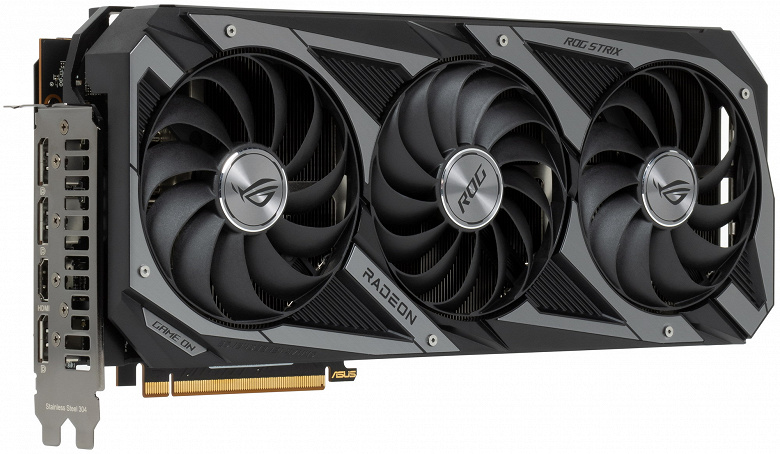
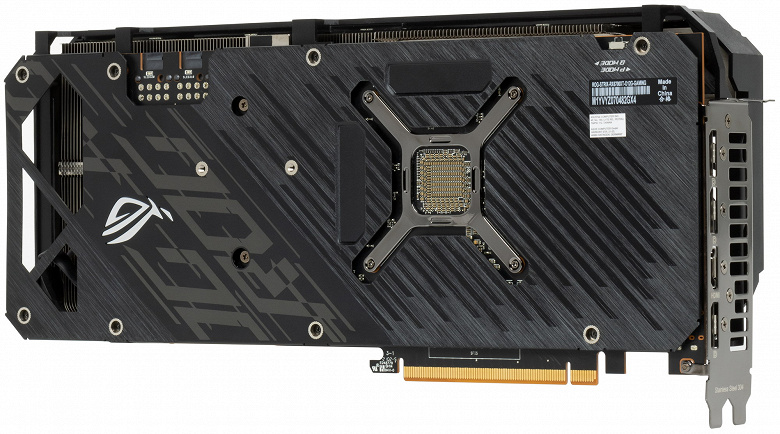
Asustek Computer (Asus trademark) was founded in 1989 in the Republic of China (Taiwan). Headquartered in Taipei / Taiwan. On the Russian market since 1992. The oldest manufacturer of video cards and motherboards. Now it produces a very wide range of products in many areas of the IT industry (including the mobile segment). Manufactured in China and Taiwan. The total number of employees is about 2000 people.
Specification – Asus ROG Strix Radeon RX 6700 XT Gaming OC 12GB 192-bit GDDR6
| Asus ROG Strix Radeon RX 6700 XT Gaming OC 12GB 192-bit GDDR6 | ||
|---|---|---|
| Parameter | Meaning | Nominal value (reference) |
| GPU | Radeon RX 6700 XT (Navi 22) | |
| Interface | PCI Express x16 4.0 | |
| GPU frequency (ROPs), MHz | OC Mode: 2568(Boost)—2641(Max) Gaming Mode: 2548(Boost)—2641(Max) | 2424(Boost)—2643(Max) |
| Memory frequency (physical (effective)), MHz | 4000 (16000) | 4000 (16000) |
| Memory bus width, bit | 192 | |
| GPU Computing Units | 40 | |
| Number of operations (ALU / CUDA) per block | 64 | |
| Total number of ALU / CUDA units | 2560 | |
| Texture units (BLF / TLF / ANIS) | 160 | |
| ROP units | 64 | |
| Number of Ray Tracing blocks | 40 | |
| Number of tensor blocks | – | |
| Dimensions, mm | 320×140×58 | 265×100×40 |
| The number of slots in the system unit occupied by the video card | 3 | 2 |
| PCB color | black | black |
| Peak power consumption in 3D, W | 212 | 190 |
| Power consumption in 2D mode, W | 20 | 20 |
| Power consumption in sleep mode, W | 4 | 4 |
| Noise level in 3D (maximum load), dBA | 42,9 | 32,7 |
| Noise level in 2D (video viewing), dBA | 18,0 | 18,0 |
| Noise level in 2D (idle), dBA | 18,0 | 18,0 |
| Video outputs | 1 × HDMI 2.1, 3 × DisplayPort 1.4a | 1 × HDMI 2.1, 3 × DisplayPort 1.4a |
| Multiprocessor support | there is no data | |
| Maximum number of receivers / monitors for simultaneous image display | 4 | 4 |
| Power: 8-pin connectors | 2 | 1 |
| Power: 6-pin connectors | 0 | 1 |
| Max Resolution / Frequency, DisplayPort | 3840 × 2160 @ 120Hz, 7680 × 4320 @ 60Hz | |
| Max Resolution / Frequency, HDMI | 3840 × 2160 @ 120Hz, 7680 × 4320 @ 60Hz | |
| Asus Card Retail Deals |
Memory
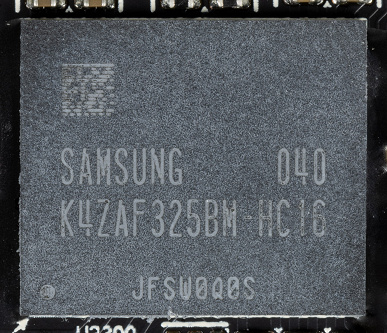
The card has 12 GB of GDDR6 SDRAM located in 6 12 Gbit chips on the front side of the PCB. Samsung memory chips (GDDR6, K4ZAF325BM-HC16) are designed for a nominal nominal operating frequency of 4000 (16000) MHz.
Comparison with RX 6700 XT Gaming OC (12 GB) and Radeon RX 6700 XT 12 GB
| Asus ROG Strix Radeon RX 6700 XT Gaming OC (12 GB) | AMD Radeon RX 6700 XT (12 GB) |
|---|---|
| front view | |
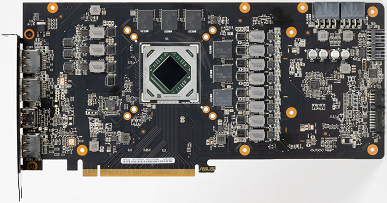 | 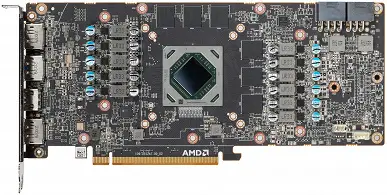 |
| back view | |
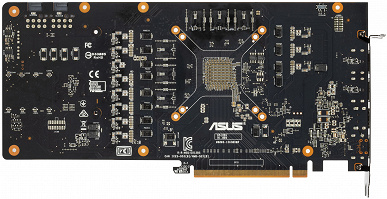 | 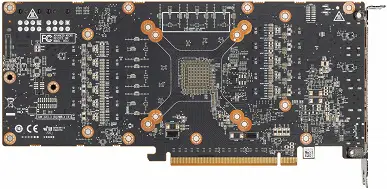 |
The total number of power phases for the reference card Radeon RX 6700 XT and for the Asus card is the same – 11. The Asus PCB is somewhat similar to the reference card, but there are also many differences.
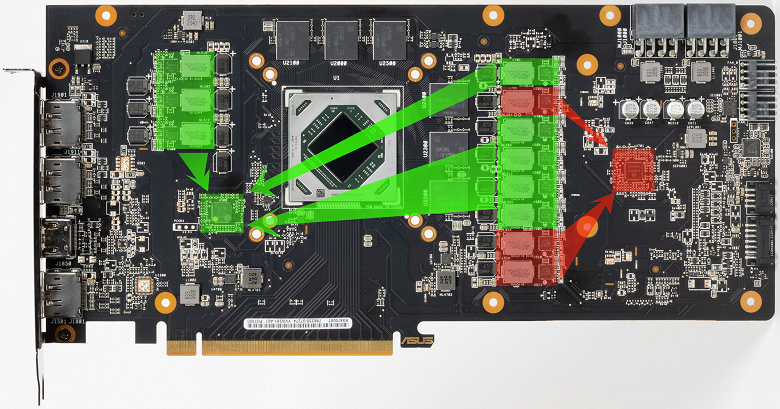
The power supply circuit of the kernel is marked in green, and the memory is in red. PWM controller IR35217 (IOR / Infineon) controls 8 phases of GPU power supply.
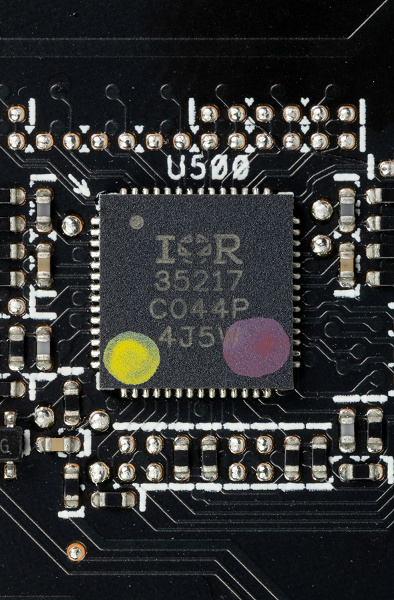
There is also a PWM controller NCP81022 (On Semiconductor), which controls three phases of power supply to memory chips; it is also located on the face of the PCB.
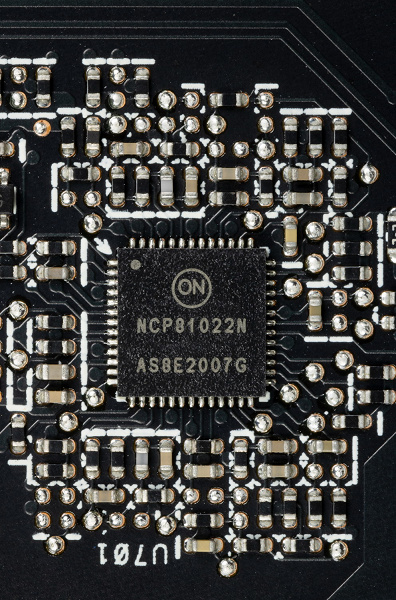
The GPU power converter, built using Super Alloy Power II technology and modern solid-state capacitors (which is traditional for Asus), uses DrMOS Vishay transistor assemblies – in this case, SiC643 for the GPU power phases and SiC654 for the memory power phases, each of which is designed for maximum current 50 A.
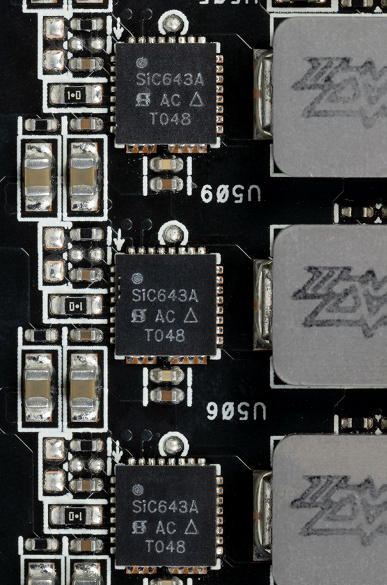
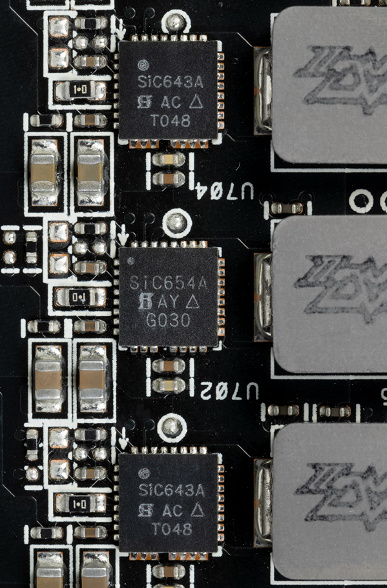
The board has the usual number of video outputs (4), and the set is no less familiar: 3 DP 1.4 and 1 HDMI 2.1.
You can also find a proprietary controller for controlling the backlight on the board.
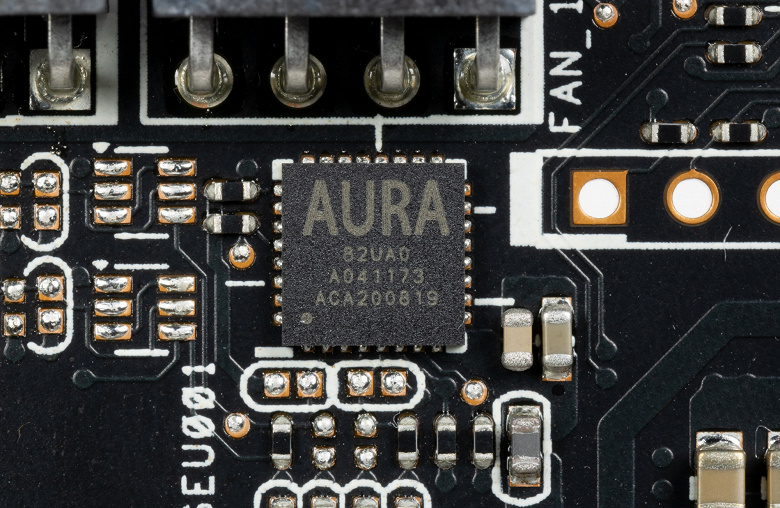
And the well-known ITE processor is in charge of monitoring.
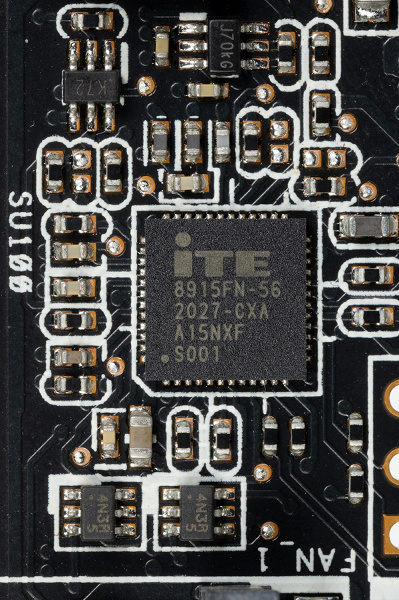
It also controls two FanConnect II connectors for case fans, which can work depending on the heating of the video card.
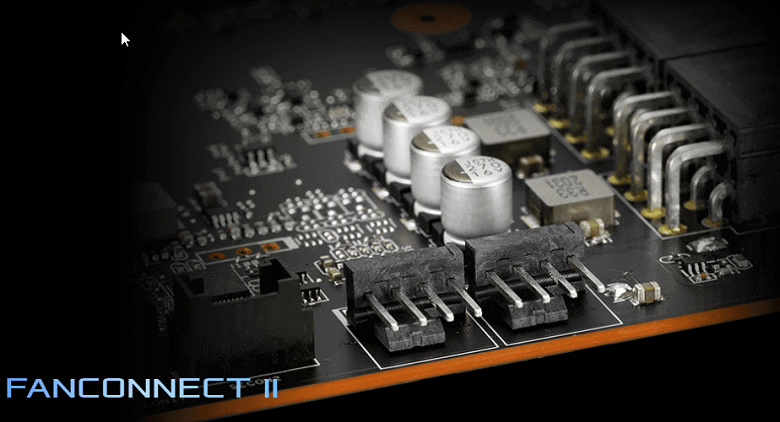
The nominal memory frequencies are equal to the reference values. But the boost value of the core frequency is higher than the reference analog, which on average gives a performance increase of 5%.
Manual overclocking was tested using the standard AMD utility included in the driver control panel (although possible via Asus GPU Tweak and MSI Afterburner). The maximum possible frequencies for stable operation were found to be 2754/17088 MHz. At the same time, the performance gain relative to the reference card was just over 8.5%.
The video card, traditionally for the ROG Strix series, has two BIOS options and a switch on the top of the card.
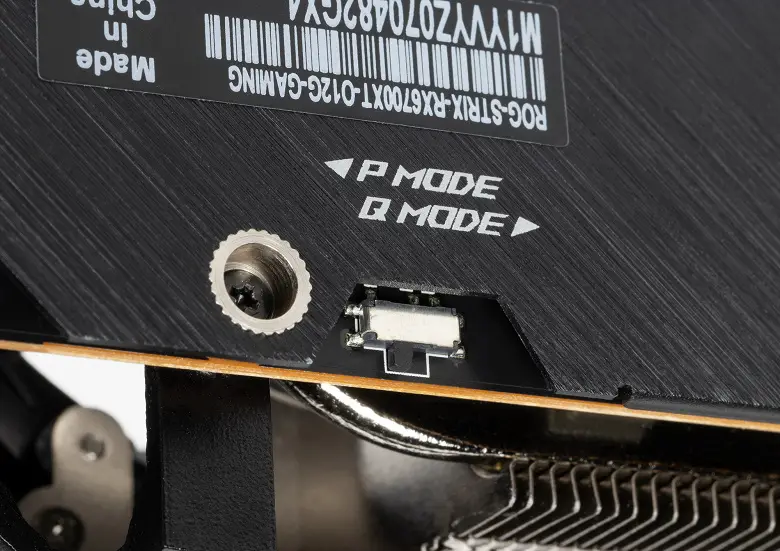
The positions are indicated as P Mode (Performance) and Q Mode (Quiet). The difference lies in different curves of the fan operation setting (in terms of frequencies, everything is almost identical).
At low GPU load, the fans always stop. Power is supplied through two 8-pin connectors.
The operation of the card is controlled using the well-known proprietary utility Asus GPU Tweak II.
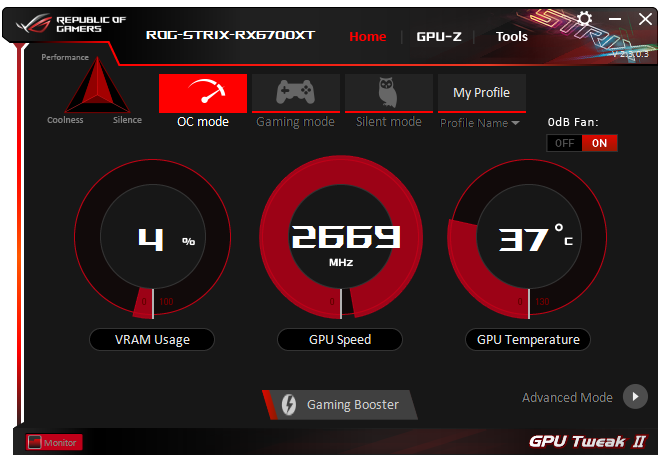
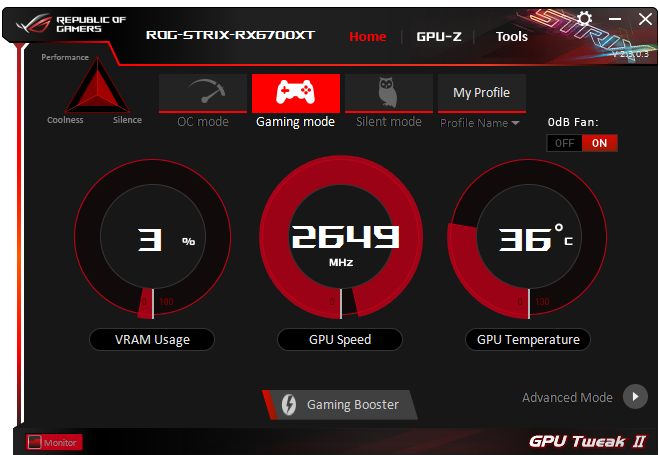
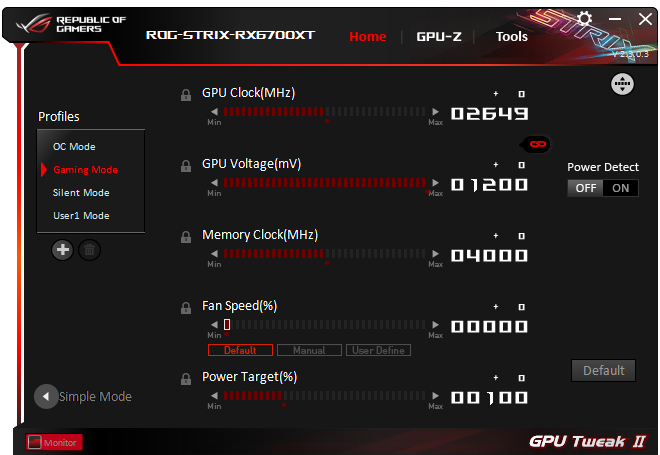
Heating and cooling
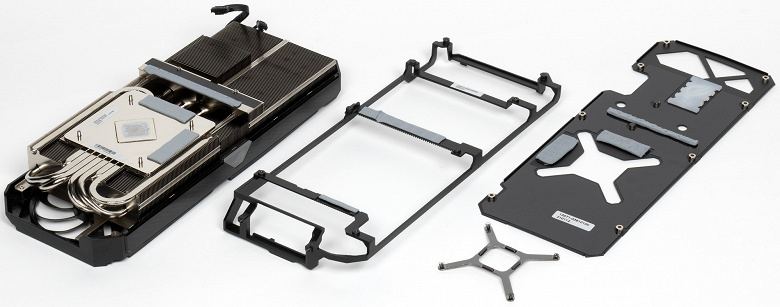
The basis of the CO is a huge two-piece plate nickel-plated radiator with heat pipes soldered to the base of direct contact with the GPU and memory chips. The same heatsink serves as a cooler for some components of the VRM power converters using a small base plate. For the rest of the VRM mosfets, separate radiators are provided, located on a frame bolted to the main radiator. The back plate is made of aluminum with an electrical protective coating and has a dual purpose: it serves as a PCB protection element and through the thermal interface participates in cooling the back side of the card in the zones of memory chips and power converters.
As can be seen from the principle of operation of this CO, all hot air remains inside the case, it is blown out partially behind the video card, as well as directly onto the motherboard. This means that you need to have a well-ventilated housing.
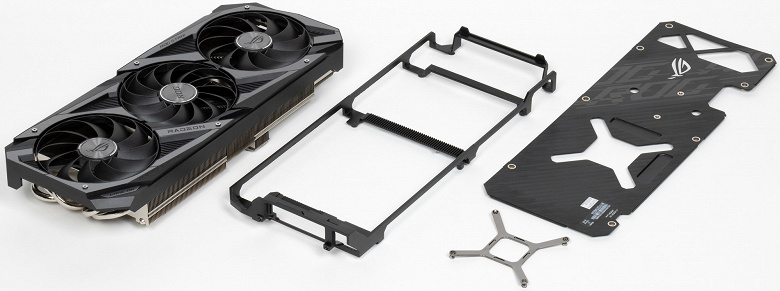
Above the radiator, there is a casing with three ∅95 mm Axial-tech fans, in which the ends of the blades are connected by a ring for a clearer direction of air flow to the radiator. In addition, the middle fan has 2 more blades than the outer ones.
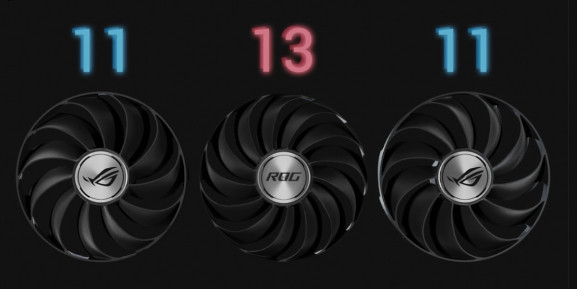
And he also rotates the fan in the opposite direction relative to the extreme, which provides a kind of “gear effect”, helping to fight the turbulence of the air flow.
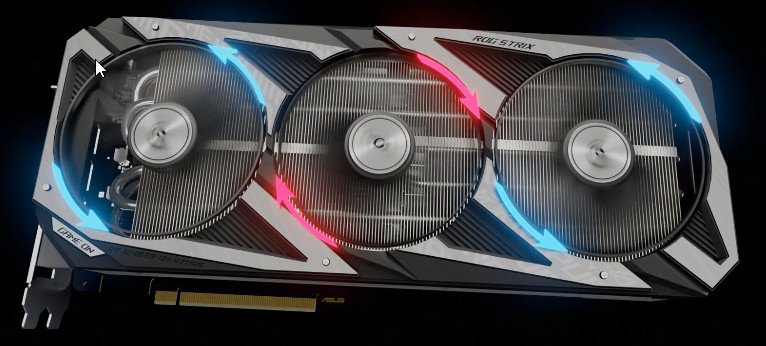
The fans stop at low load if the GPU temperature drops below 50 degrees. Of course, the CO becomes silent at the same time. When the PC starts up, the fans run, then they turn off before the OS boots. Then they turn on again for a few seconds before loading the video driver, and after polling the operating temperature, they turn off again. Below is a video on this topic. Fans are turned off at idle with any BIOS option.
Thermal Monitoring with MSI Afterburner:
BIOS P Mode (Performance):
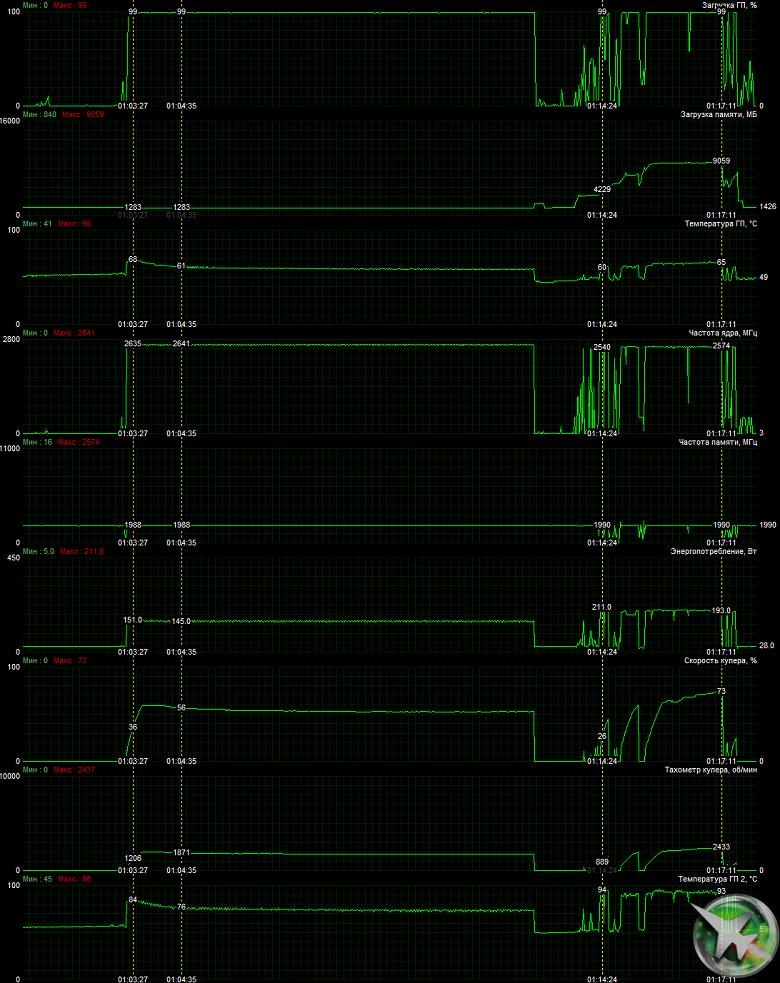
After 6 hours of running under load in OC Mode, the maximum core temperature did not exceed 68 degrees, which is a good result for video cards of this level. The maximum power was recorded at 212 W, and the maximum heating was observed in the center of the PCB.
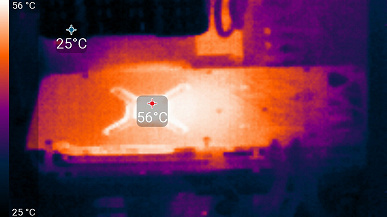
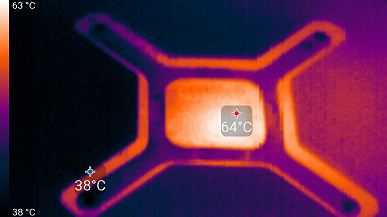
Below is a 9-minute card heating accelerated 50 times.
With the described manual overclocking, the card’s operating parameters did not change much, but the maximum power consumption rose to 227 watts.
BIOS Q Mode (Quiet)
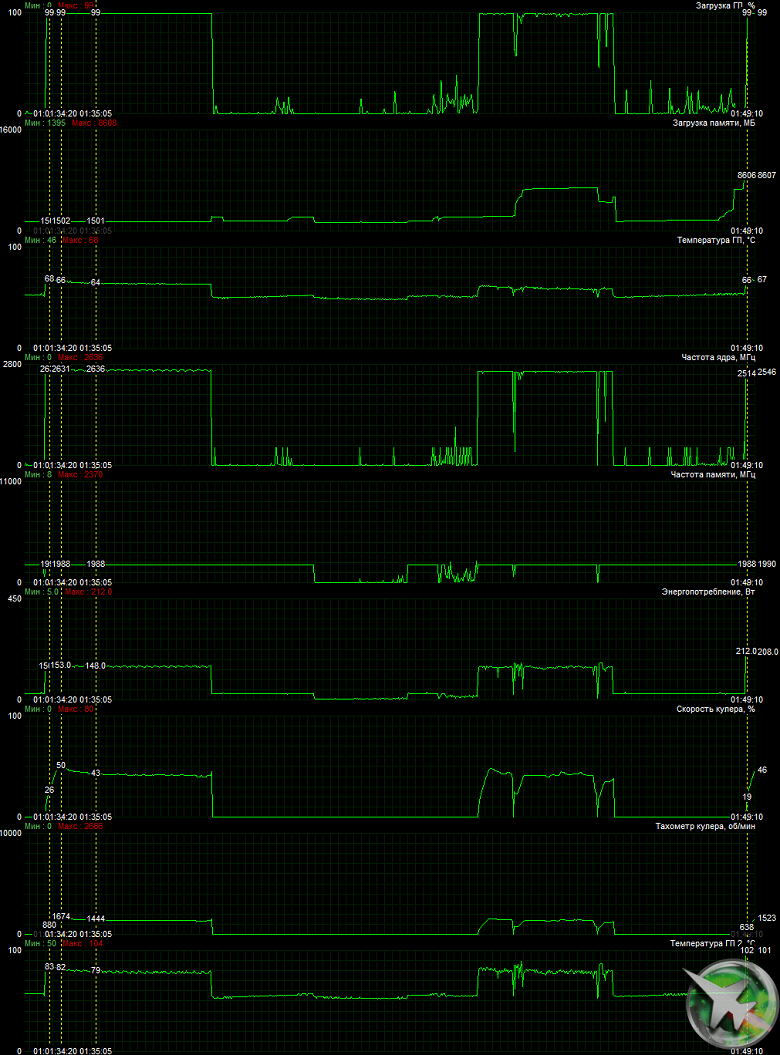
In this mode, the core temperature was slightly higher – 78 ° C, but the fans rotated more slowly.
Noise
The noise measurement technique assumes that the room is noise-insulated and damped, and reverberations are reduced. The system unit, in which the noise of video cards is examined, does not have fans and is not a source of mechanical noise. The background level of 18 dBA is the noise level in the room and the noise level of the sound level meter itself. Measurements are taken from a distance of 50 cm from the video card at the level of the cooling system.
Measurement modes:
- Idle mode in 2D: loaded internet browser with iXBT.com website, Microsoft Word window, a number of internet communicators
- 2D mode with movie viewing: SmoothVideo Project (SVP) is used – hardware decoding with insertion of intermediate frames
- 3D mode with maximum load on the accelerator: using FurMark benchmark
The assessment of the noise level gradations is as follows:
- less than 20 dBA: conditionally silent
- 20 to 25 dBA: very quiet
- from 25 to 30 dBA: quiet
- 30 to 35 dBA: clearly audible
- 35 to 40 dBA: loud but bearable
- above 40 dBA: very loud
In idle, the Performance Mode and Quiet Mode did not differ at all: in 2D the temperature was no higher than 36 ° C, the fans did not work, the noise level was equal to the background one – 18 dBA.
When watching a movie with hardware decoding, nothing changed.
Under maximum load in 3D, the temperature in Performance Mode reached 68 ° C. At the same time, the fans spun up to 2433 rpm, the noise grew up to 32.9 dBA: this is clearly audible, but tolerable. In the video below, noise was captured for a couple of seconds every 30 seconds.
In Quiet Mode, the temperature reached 78 ° C. At the same time, the fans spun up to 1674 rpm, and the noise grew only up to 30.0 dBA: it’s pretty quiet.
Backlight
The backlighting of the card is implemented on the top end, in the inserts near the fans and in the ROG logo built into the back plate.
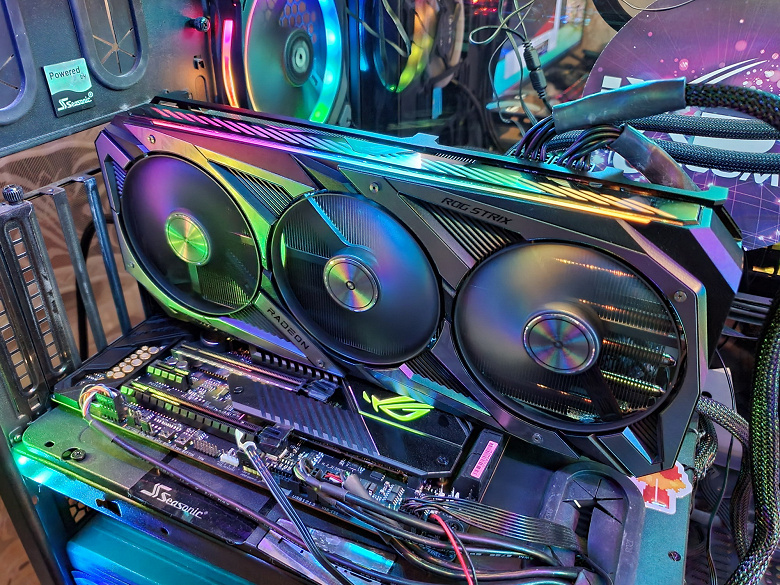
Backlight control is traditionally performed using Asus’ proprietary program – Armory Crate.
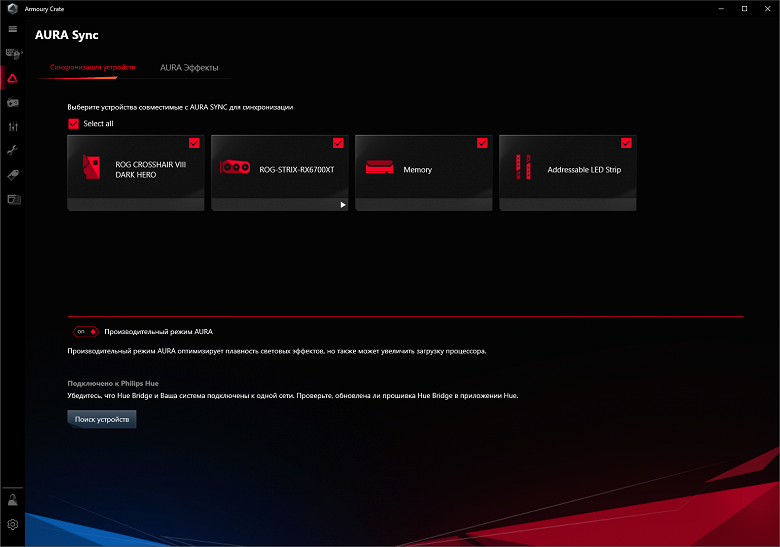
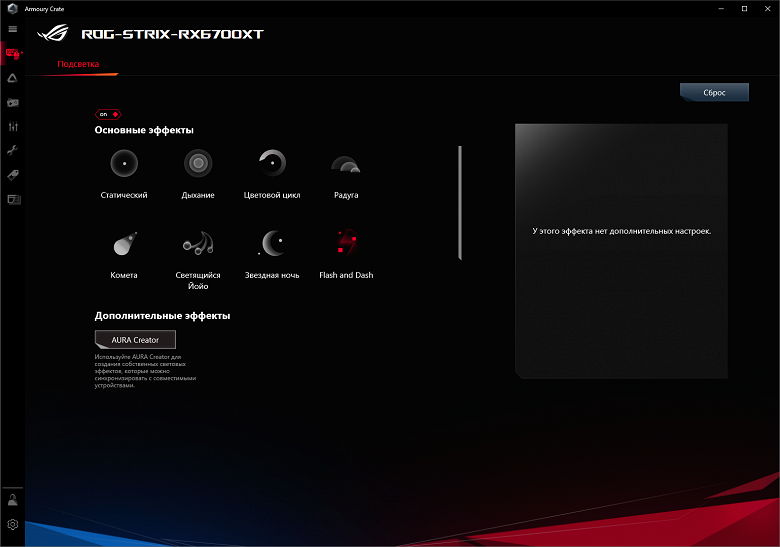
The choice of modes is not very wide, but there is a program Aura Creator, which is also distributed free of charge, and with its help you can create your own lighting scenarios.
Scope of delivery and packaging
The package, in addition to the traditional user manual and the ROG card, includes small bonuses in the form of zip ties and a branded line.
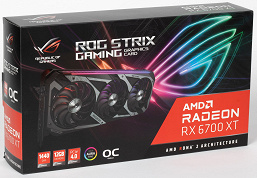
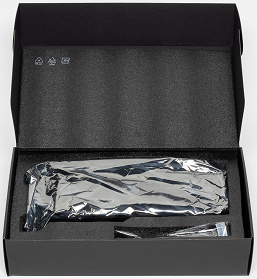
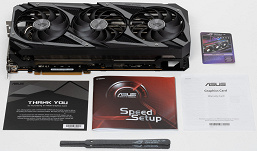
Test results
Test bench configuration
- Компьютер на базе процессора AMD Ryzen 9 5950X (Socket AM4):
- Платформа:
- процессор AMD Ryzen 9 5950X (разгон до 4,6 ГГц по всем ядрам);
- ЖСО Cougar Helor 240;
- системная плата Asus ROG Crosshair Dark Hero на чипсете AMD X570;
- оперативная память TeamGroup T-Force Xtreem ARGB (TF10D48G4000HC18JBK) 32 ГБ (4×8) DDR4 (4000 МГц);
- SSD Intel 760p NVMe 1 ТБ PCI-E;
- жесткий диск Seagate Barracuda 7200.14 3 ТБ SATA3;
- блок питания Seasonic Prime 1300 W Platinum (1300 Вт);
- корпус Thermaltake Level20 XT;
- операционная система Windows 10 Pro 64-битная; DirectX 12 (v.20H2);
- телевизор LG 55Nano956 (55″ 8K HDR, HDMI 2.1);
- драйверы AMD версии 21.5.1;
- драйверы Nvidia версии 466.27;
- VSync отключен.
- Платформа:
Testing tool list
All gaming tests used the maximum graphics quality in the settings.
- Hitman III (IO Interactive/IO Interactive)
- Cyberpunk 2077 (Softclub / CD Projekt RED), patch 1.2
- Death Stranding (505 Games/Kojima Productions)
- Assassin’s Creed Valhalla (Ubisoft/Ubisoft)
- Watch Dogs: Legion (Ubisoft/Ubisoft)
- Control (505 Games/Remedy Entertainment)
- Godfall (Gearbox Publishing/Counterplay Games)
- Resident Evil Village (Capcom/Capcom)
- Shadow of the Tomb Raider (Eidos Montreal/Square Enix), HDR включен
- Metro Exodus (4A Games/Deep Silver/Epic Games)
To calculate the hashrate when mining Ethereum, the T-Rex miner (0.20.01) was used, the average indicator for 2 hours was recorded in two modes:
- by default (consumption limit reduced to 70%, GPU frequency reduced by 200 MHz, memory frequency by default, fans set in manual mode by 70%)
- optimization (the consumption limit is reduced to 70%, the GPU frequency is reduced by 200 MHz, the memory frequency is increased by 500-1000 MHz (depending on the card), the fans are set in manual mode by 80%)
To test the GeForce RTX 3060, we used the same “leaked” driver version 470.05, in which the protection against mining was disabled.
Test results in 3D games
Standard benchmark results without hardware ray tracing at 1920 × 1200, 2560 × 1440, and 3840 × 2160
Assassin’s Creed Valhalla
Shadow of the Tomb Raider
Most games still do not support ray tracing technology, and there are still a lot of video cards on the market that do not support RT in hardware. The same is true for Nvidia’s DLSS smart anti-aliasing technology. Therefore, we still carry out the most massive tests in games without ray tracing. Nevertheless, today already half of the video cards we regularly test support RT technology, so we conduct tests not only using conventional rasterization methods, but also with the inclusion of RT and / or DLSS. It is clear that in this case, video cards of the AMD Radeon RX 6000 family participate in tests without an analogue of DLSS (we are waiting for the company to implement the promised analogue and speed up the calculation of ray tracing).
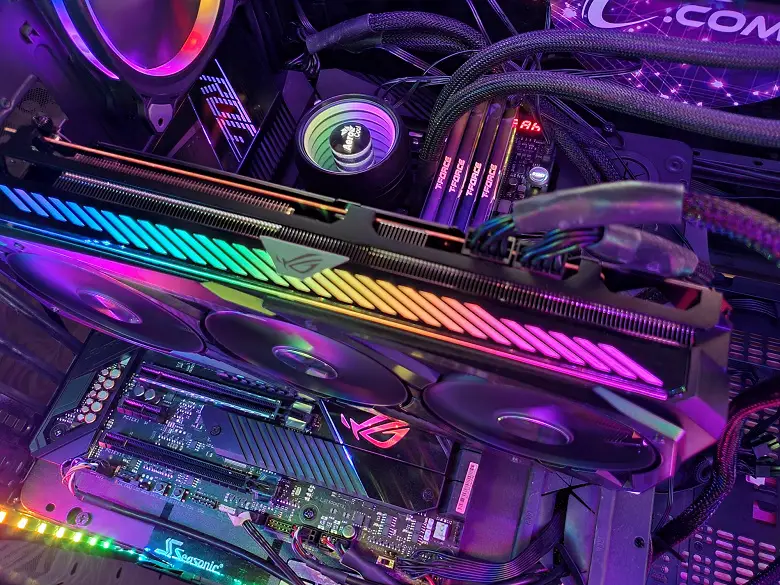
Test results with hardware ray tracing and / or DLSS enabled at 1920 × 1200, 2560 × 1440, and 3840 × 2160
Cyberpunk 2077, RT+DLSS
Watch Dogs: Legion, RT
Watch Dogs: Legion, RT+DLSS
Resident Evil Village, RT
Shadow of the Tomb Raider, RT
IXBT.com Rating
IXBT.com Rating
The iXBT.com accelerator rating demonstrates to us the functionality of video cards relative to each other and is presented in two versions:
- Bitcoiminershashrate.com rating option without RT included
The rating is compiled for all tests without the use of ray tracing technologies. This rating is normalized for the weakest accelerator – GeForce GTX 1650 (that is, the combination of speed and features of the GeForce GTX 1650 is taken as 100%). Ratings are carried out for 28 accelerators that we study monthly as part of the Best Video Card of the Month project. In this case, a group of cards for analysis was selected from the general list, which includes the Radeon RX 6700 XT and its competitors.
The rating is given in total for all three resolutions.
| № | Accelerator model | IXBT.com Rating | Utility rating | price, rub. |
|---|---|---|---|---|
| 06 | Asus ROG Strix RX 6700 XT OC, overclocked to 2754/17088 | 690 | 46 | 150 000 |
| 07 | Asus ROG Strix RX 6700 XT OC, 2568—2641/16000 | 670 | 45 | 150 000 |
| 08 | RTX 3070 8GB 1725-1950 / 14000 | 660 | 35 | 190 000 |
| 09 | RTX 2080 Ti 11 GB, 1635—1950 / 14000 | 650 | 39 | 168 000 |
| 10 | RX 6700 XT 12 GB, 2424—2643 / 16000 | 640 | 43 | 150 000 |
| 11 | RTX 3060 Ti 8 GB, 1665—2010 / 14000 | 590 | 33 | 180 000 |
We have previously noted that, according to the results of gaming tests, the Radeon RX 6700 XT performed between the RTX 3070 and RTX 3060 Ti, being closer to the 3070, while the increased frequencies of the Asus card even allowed it to bypass the RTX 3070 in games without ray tracing.
- Rating option with RT included
The rating is based on 5 tests using ray tracing technology (no Nvidia DLSS!). This rating is normalized for the weakest accelerator in this group – GeForce RTX 2070 (that is, the combination of speed and features of the GeForce RTX 2070 is taken as 100%).
The rating is given in total for all three resolutions.
| № | Accelerator model | BitcoinMinershashrate.com Rating | Utility rating | price, rub. |
|---|---|---|---|---|
| 03 | RTX 3070 8GB 1725-1950 / 14000 | 170 | 9 | 190 000 |
| 04 | RTX 2080 Ti 11 GB, 1635—1950 / 14000 | 150 | 9 | 168 000 |
| 05 | RTX 3060 Ti 8 GB, 1665—2010 / 14000 | 140 | 8 | 180 000 |
| 14 | Asus ROG Strix RX 6700 XT OC, overclocked to 2754/17088 | 90 | 6 | 150 000 |
| 15 | Asus ROG Strix RX 6700 XT OC, 2568—2641/16000 | 80 | 5 | 150 000 |
| 16 | RX 6700 XT 12 GB, 2424—2643 / 16000 | 70 | 5 | 150 000 |
If, in the case of RTX 3xxx cards, when switching to games with ray tracing, we somehow manage without epithets like “Achilles’ heel”, then talking about the Radeon RX 6xxx, we have to drastically change intonation compared to the previous rating. Yes, when you turn on RT, the performance of the Radeon RX 6700 XT drops much more than that of the GeForce RTX 3060 Ti (not to mention the 3070). Alas, these kinds of games are now really a “bottleneck” for new products from AMD. All that remains is to wait for the release of the promised AMD Fidelity Super Resolution technology, which can become to some extent an analogue of Nvidia DLSS and compensate for the performance losses with RT at least to some extent.
As for the Asus card, here its increased frequencies and manual overclocking only allowed it to rise slightly against the reference analog, but Nvidia is still far from its rivals.
Utility rating
The utility rating of the same cards is obtained if the indicator of the previous rating is divided by the prices of the corresponding accelerators. To calculate the utility rating, the retail prices were used conditionally for June 2021 .
Attention! For well-known reasons, the prices for all cards have become purely speculative and have dramatically increased significantly relative to the recommended ones. Because of this, the calculation of utility ratings has become meaningless, we present these ratings simply by tradition, but in the current market situation, conclusions cannot be drawn on their basis .
- Utility rating option without including RT
| № | Accelerator model | Utility rating | IXBT.com Rating | price, rub. |
|---|---|---|---|---|
| 03 | Asus ROG Strix RX 6700 XT OC, overclocked to 2754/17088 | 46 | 690 | 150 000 |
| 05 | Asus ROG Strix RX 6700 XT OC, 2568—2641/16000 | 45 | 670 | 150 000 |
| 06 | RX 6700 XT 12 GB, 2424—2643 / 16000 | 43 | 640 | 150 000 |
| 09 | RTX 2080 Ti 11 GB, 1635—1950 / 14000 | 39 | 650 | 168 000 |
| 21 | RTX 3070 8GB 1725-1950 / 14000 | 35 | 660 | 190 000 |
| 24 | RTX 3060 Ti 8 GB, 1665—2010 / 14000 | 33 | 590 | 180 000 |
- Utility rating option with RT included
| № | Accelerator model | Utility rating | IXBT.com Rating | price, rub. |
|---|---|---|---|---|
| 02 | RTX 3070 8GB 1725-1950 / 14000 | 9 | 170 | 190 000 |
| 03 | RTX 2080 Ti 11 GB, 1635—1950 / 14000 | 9 | 150 | 168 000 |
| 08 | RTX 3060 Ti 8 GB, 1665—2010 / 14000 | 8 | 140 | 180 000 |
| 14 | Asus ROG Strix RX 6700 XT OC, overclocked to 2754/17088 | 6 | 90 | 150 000 |
| 15 | Asus ROG Strix RX 6700 XT OC, 2568—2641/16000 | 5 | 80 | 150 000 |
| 16 | RX 6700 XT 12 GB, 2424—2643 / 16000 | 5 | 70 | 150 000 |
Test results in mining (mining, hashrate)
Hashrate for GeForce RTX 3060 was measured on driver version 470.05, on other versions it is 24/26 MH / s.
We perfectly see the tendency that has developed recently that top-end and even mid-range video cards received prices according to their ratings in mining (hash rate). On the one hand, this is very bad for gamers who want those accelerators that give the maximum hash rate. On the other hand, the same Radeon RX 6700 XT in games is only slightly weaker than the RTX 3070, but due to the hash rate, which is not comparable to the 3070, it has a lower price. However, it is extremely wild for me to talk about prices for video cards that have flown far beyond 100,000 rubles, and even 200,000 …
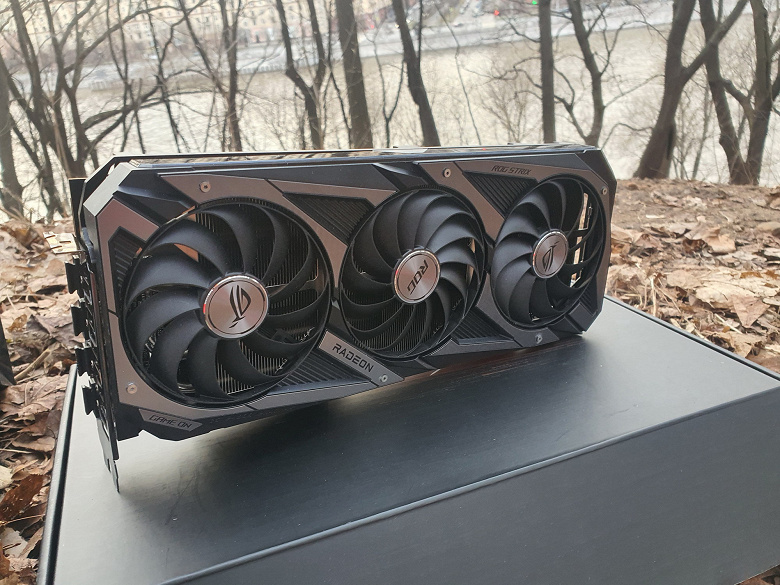
Let me emphasize once again that optimization of the settings for the operation of video cards for mining in our case does not provide for strong overclocking of the video memory, and external blowing of video cards is also mandatory.
conclusions
The Asus ROG Strix Radeon RX 6700 XT Gaming OC (12 GB) is a kind of hybrid of a top-end accelerator with a mid-level one. By itself, the Radeon RX 6700 XT does not pretend to set performance records, it will pull only high quality graphics in a resolution of 2.5K, and then without enabling ray tracing. However, the cooling system of the Asus video card is practically the same as on the most flagship ROG series video cards, there are also two BIOS versions, which make it possible to sacrifice a little performance in order to reduce noise when temperatures rise. In addition, this video card has factory-overclocked frequencies and overclocking potential.
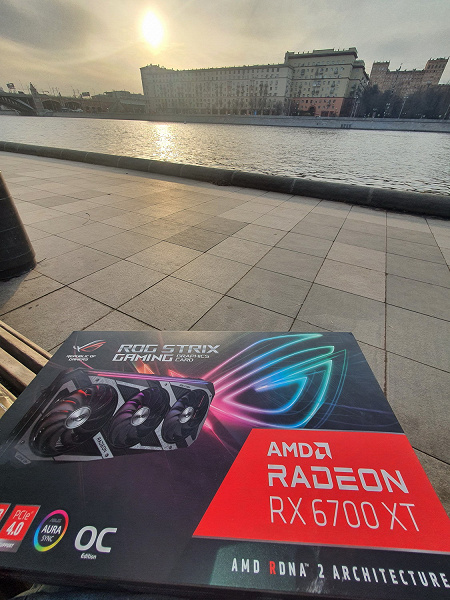
The video card has an excellent power supply system, and is connected to the power supply unit through the standard two 8-pin connectors. A set of video outputs (3 DP + 1 HDMI) meets modern standards. Also note the very nice lighting.
Of course, in games with ray tracing, the Radeon RX 6000 family is not doing very well: the Radeon RX 6700 XT is inferior even to the GeForce RTX 3060 Ti and is suitable for playing with maximum graphics quality in a resolution not higher than Full HD. If ray tracing is not provided in the game or is not used, then the Radeon RX 6700 XT will pull high quality graphics at a resolution of 2.5K. And since the lion’s share of PC games do not yet support RT, the Radeon RX 6700 XT is a real leader in its segment, especially now that the GeForce RTX 3070 is much more expensive.
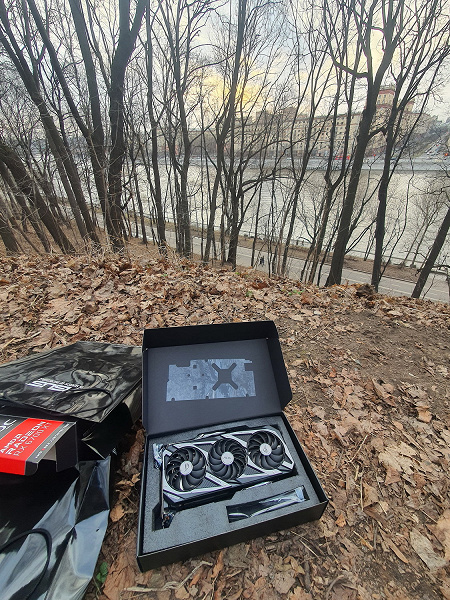
The Radeon RX 6700 XT, like all accelerators of the Radeon RX 6000 series, supports the HDMI 2.1 standard, which allows you to output 4K images at 120 FPS or 8K using a single cable, hardware decoding of video data in AV1 format, Smart Access Memory technology (which, by the way, already have competitors – under the standard PCIe name ReSizable BAR).
References :
In the Original Design nomination, the Asus ROG Strix Radeon RX 6700 XT Gaming OC (12 GB) received the following awards:
Testbed : AMD Ryzen 9 5950X CPU courtesy of AMD ,
ROG Crosshair Dark Hero motherboard courtesy of Asus





